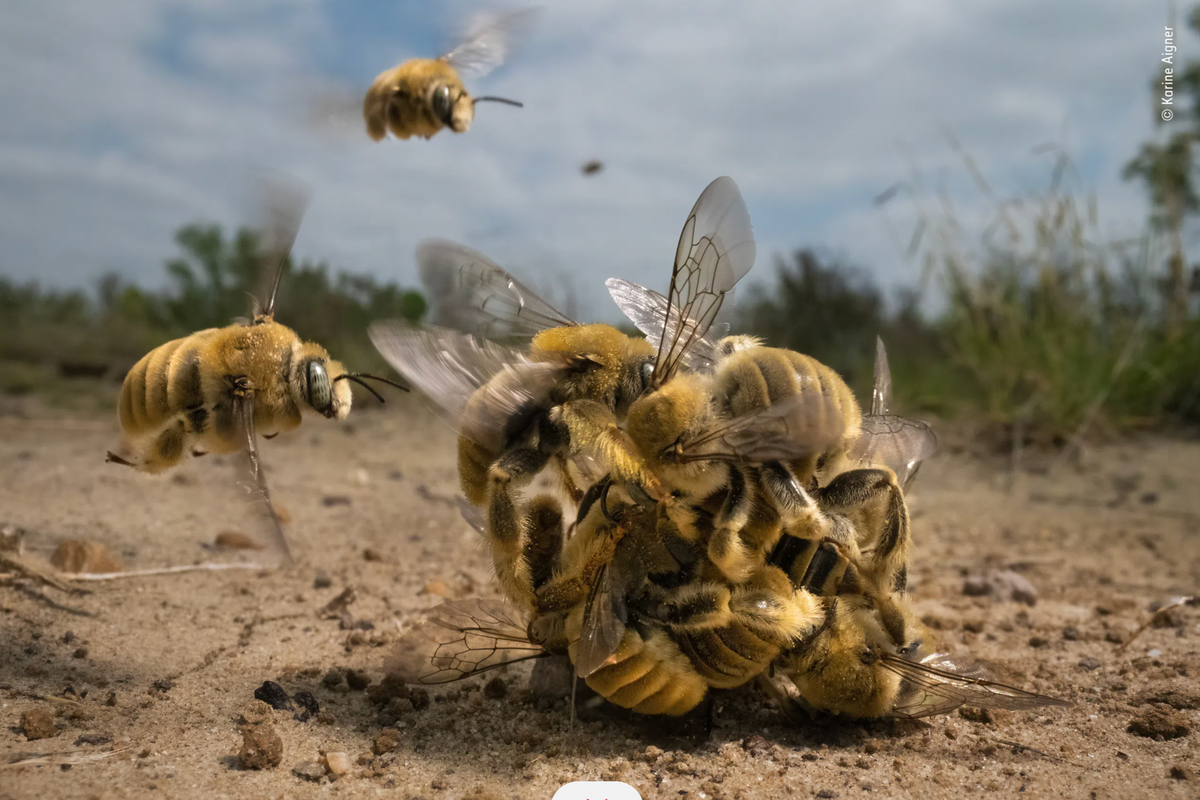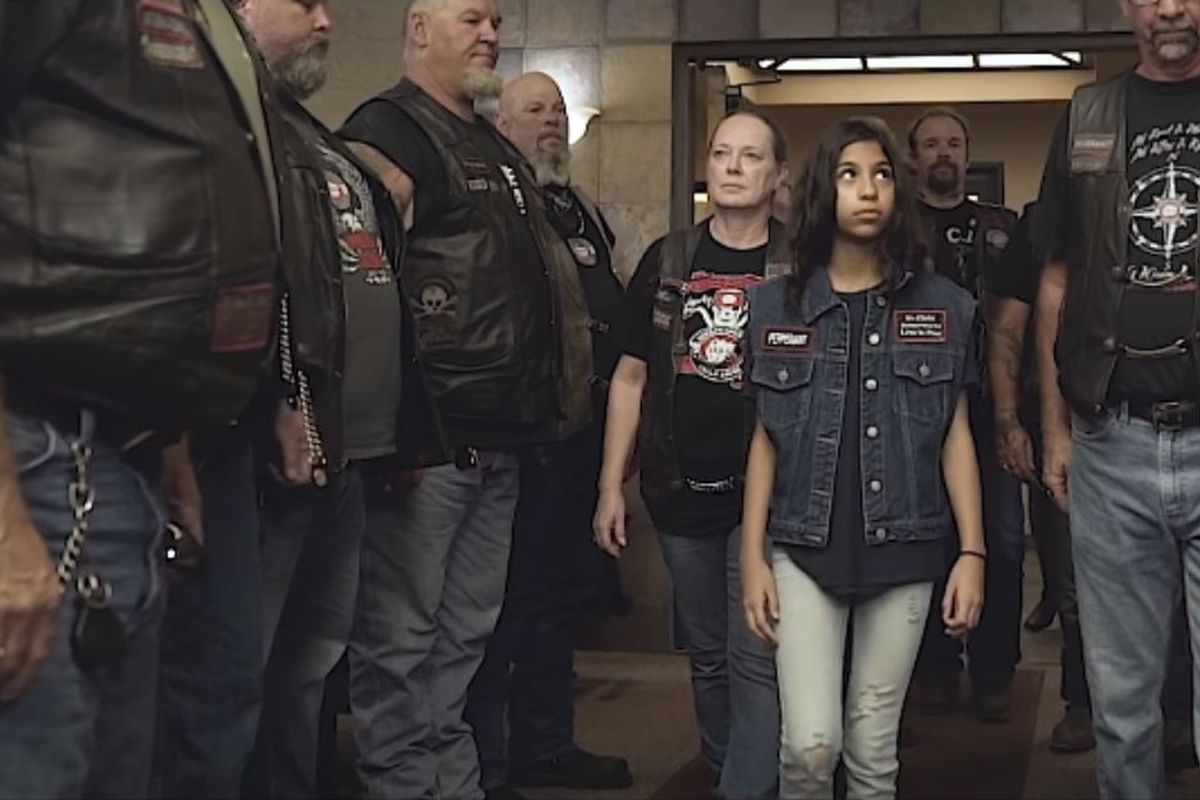
While we can’t all swim the deepest depths of the ocean or glide across the Amazon’s highest canopies, art and technology has a way of bringing the Earth’s natural splendors directly to us in breathtaking ways.
Since 1965, the Natural History Museum of London’s Wildlife Photographer of the Year contest has showcased the very best of what nature photography has to offer. This year, the competition attracted more than 38,000 entries from nearly 100 countries celebrating all that is strange and beautiful within the animal kingdom. Images included insects performing bizarre mating rituals, carnivorous snakes snapping up bats midair and flamingos that appear to be walking on clouds.
Out of those 38,000 entries, judges whittled down 19 finalists based on “originality, narrative, technical excellence and ethical practice.” Then a top prize was awarded in two different age categories.
Though the museum displays the winning images in exhibitions across the globe, you can take a virtual peek at them below, along with some other honorable mentions.
Adult Grand Title Winner: “The Big Buzz” by Karine Aigner
South Texas, U.S.A.

For these bees, nothing says “romance” quite like the hot sands of a Texas ranch in May. Female bees know that love is in the air once the surrounding cacti begin to bloom in springtime. Here we see a close-up shot of a fuzzy, whirling ball of bumbles getting down to buzzzzzzness.
The grand prize winning photo, taken by photographer Karine Aigner is not only visually stunning, but helps shine a light on one of the world’s smallest, yet most important creatures that are in need of our help and attention.
Aigner is one of very few women to take home the grand prize in more than five decades. Following her win, she told NPR, “This one’s for every girl out there who, in a male-dominated field, thought she couldn’t do it. Because you can do it. You can attain it. You just have to do it.”
Aigner is also part of Girls Who Click, a nonprofit that helps girls pursue their passion in nature photography.
Young Grand Title Winner: “The Beauty of Baleen” by Katanyou Wuttichaitanakorn
Thailand

Katanyou Wuttichaitanakorn’s award-winning image was the result of patience and an extremely steady hand. Once a nearby Bryde’s whale was spotted, Wuttichaitanakorn quickly turned off the engine of his tour boat and caught the image as the boat continued to rock in the swell.
The shot gets up close and personal with baleen, keratin fibers used to filter small prey like plankton.
“I love how the youngster has gone off the beaten track to show a whale in a totally different composition, while capturing behavior like filter feeding. And this, coming from a young photographer, gives me hope that they are not just seeing, but observing the very minute details, learning much along the way,” said wildlife filmmaker and judge Sugandhi Gadadhar.
“Polar Frame” by Dmitry Kokh
Russia

Bears are notoriously curious with little regard for boundary issues when scavenging. Plus with more challenges keeping them from hunting in their natural habitats, bears have been pushed further into human settlements, like this weather station that was closed in the early ’90s
Photographer Dmitry Kokh was “astonished” to find more than 20 polars bears living in the abandoned town. Luckily he snapped a photo and lived to tell the tale.
“The Magical Morels” by Agorastos Papatsanis
Greece

Photographer Agorastos Papatsanis brought the magical scene to life waiting for just the right amount of sunlight through the trees and using a wide angle lens and flashes to highlight all the morels’ details.
“Heavenly Flamingos” by Junji Takasago
Japan

Japanese photographer Junji Takasago apparently had to fight back altitude sickness as he captured a group of Chilean flamingos preening high up in Bolivia’s Salar de Uyuni, the world’s largest salt pan, also known as the “mirror in the sky” for its high-definition reflections.
Takasago snapped at just the right angle to create this surreal illusion.
“Shooting Star” by Tony Wu
U.S.A./Japan

Is it a celestial creature beaming down from outer space? No, it’s a starfish dancing in his own sperm. But it’s beautiful.
“The Beauty of the Familiar” by Mateusz Piesiak
Poland

It took photographer Mateusz Piesiak several attempts to “nail the focus” to bring an intimate glimpse of a young gull’s high-speed dive right at the moment of impact with the water. But the results were worth it.
“Ndakasi’s Passing” by Brent Stirton
South Africa

Gorilla Ndakasi was only 2 months old when she became the only surviving member of her family. She was taken in by caregiver Andre Bauma, with whom she spent 13 peaceful years. The photo, taken by Brent Stirton, shows Ndakasi in Bauma’s arms as she passes.
“It was Ndakasi’s sweet nature and intelligence that helped me to understand the connection between humans and [other] great apes and why we should do everything in our power to protect them,” Bauma recalled.
“New Life for the Tohorā” by Richard Robinson
New Zealand

Known by the Māori as tohorā, the New Zealand population of southern right whales was hunted to near extinction in the 1800s. Since every new calf makes a difference, this image of … let’s say, courtship … between a male and female tohorā offers new hope.
“Jelly From the Dark Side” by Laurent Ballesta
France

Exposure to direct sunlight is lethal for a helmet jellyfish, forcing it to stay in darkness well beneath thick sheets of ice. Photographer Laurent Ballesta and his team had to seep in light from safe distances to capture this bioluminescent creature.
“The Dying Lake” by Daniel Núñez
Guatemala

This drone-captured image by Daniel Núñez shows toxic cyanobacteria flourishing on Lake Amatitlán, so much so that it competes with the forest alongside it.
Currently the lake receives around 75,000 tons of waste from Guatemala City each year, devastating the habitat for plants and fish.
Jen Guyton, photojournalist and judge noted, “What really makes this image work is the element of surprise. On first glance, the right-hand side of the image looks like a grassy field. But when you realize that it’s water, you immediately understand that something is sorely wrong with this picture – it’s a damaged ecosystem, and something must be done to fix it.”




























 (@JoJoFromJerz)
(@JoJoFromJerz) 

 (@noondlyt)
(@noondlyt)  badge he got from a captain crunch cereal box
badge he got from a captain crunch cereal box